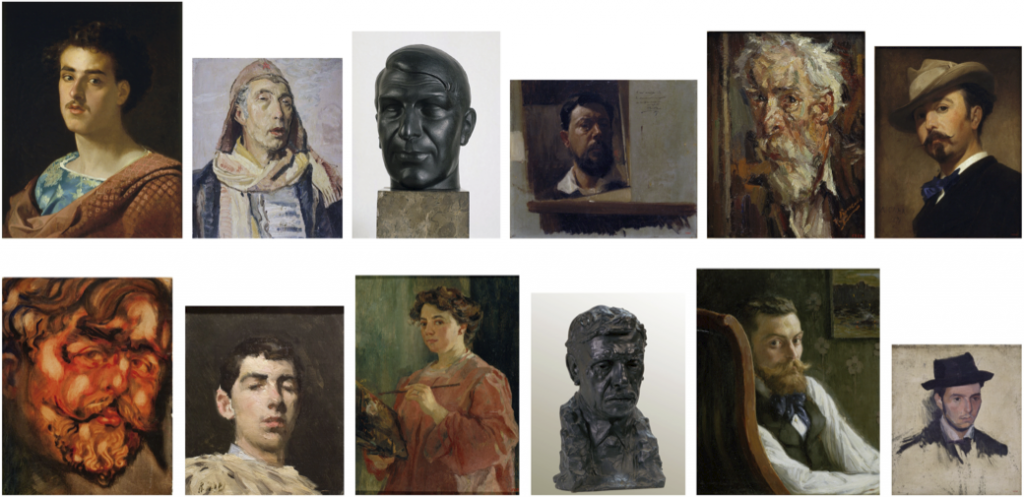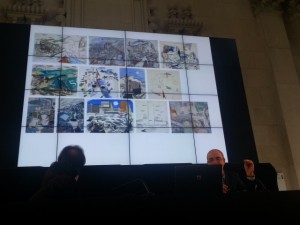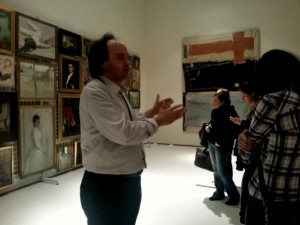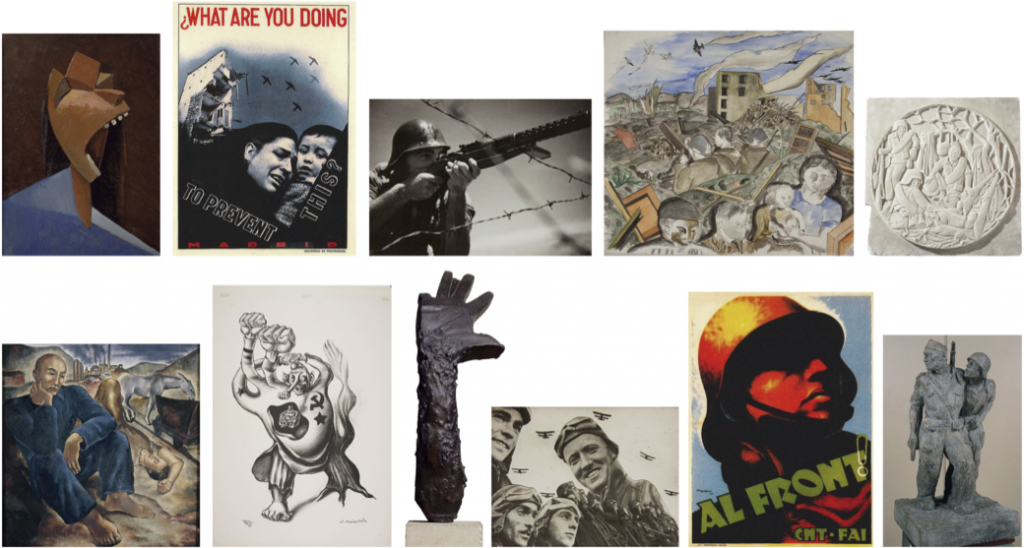The modern art and contemporary collections of the Museu Nacional d’Art de Catalunya originate from the Universal Exposition that held in Barcelona in 1888.
From that moment on and through very distinct processes, from museum systems and institutional acquisitions, to private donations and from artists, including popular subscriptions, a collection was formed which at the same time was very coherent and characteristic, as it reflected the tastes of the time. It was very specific society and place, and very cosmopolitan, as it covered the whole period of the formation of the modern artist – bohemian, avant-garde, etc., coinciding perfectly with the rise of the bourgeoisie and the consolidation of the city of masses. A society that was more technical and industrialized, a major show in itself, with crowds, new media, advertising, but also a violent setting for the struggle of the classes, of the revolution and war.
Added to this, we should point out that it is a very varied collection, which as well as the traditional arts, contains important collections of drawings, prints, caricatures, posters, decorative arts, architecture, photographs, and a numismatic collection.
We are not therefore, facing a collection that reflects the processes of modern art as the more orthodox histories explain, that is to say, as a succession of «isms» –impressionism, postimpressionism, futurism, cubism, expressionism, etc. What it reflects, rather, are the tastes, needs and aspirations of a society, the Catalan and Barcelona society, between the mid-19th century and the mid-20th century, in all its complexity and with all its contradictions. And it is here, precisely, where its extraordinary value and wealth resides.
For a long time, however, the collection has been exhibited, following the historiographical categories of the modernity – the «isms» to which we referred above, to the chronology, to the biographies of the artists, to the canonical periods, to the generic hierarchies, etc.
Furthermore, in the new exhibition that we are working on, what we are trying to avoid is both the forcing to which the conventional categories of the history of art are obliged, always abstract, as well as the constrictions represented by the chronology or the monographic studies of artists, the fees or the hierarchies. So we will let the narration speak for itself, for it to emerge from within the collection itself, thus generating its own logic.
The visitor will therefore find all the arts exhibited simultaneously, major and minor, and all the techniques, as well as the new media – photography, cinema, publicity, etc., which throughout the second half of the 19th century and the first half of the 20th century, definitively disrupted the world of art and culture in an urban society and one of masses. And Barcelona is one of its capitals: «The rise of the modern artist», «Modernism(s)», «Noucentisme(s)» (referring to Nineteen-hundreds style), «Art and the Civil War», with an epilogue dedicated to the recuperation of the avant-garde in the post-war years that, at the same time, brings the cycle to a close, and opens up new future ways in the museum’s collections.
With around 1,200 works exhibited, this will be, without paradoxes, a permanent collection always undergoing renovation, always changing.
Cap de col·leccions / Chief Curator











